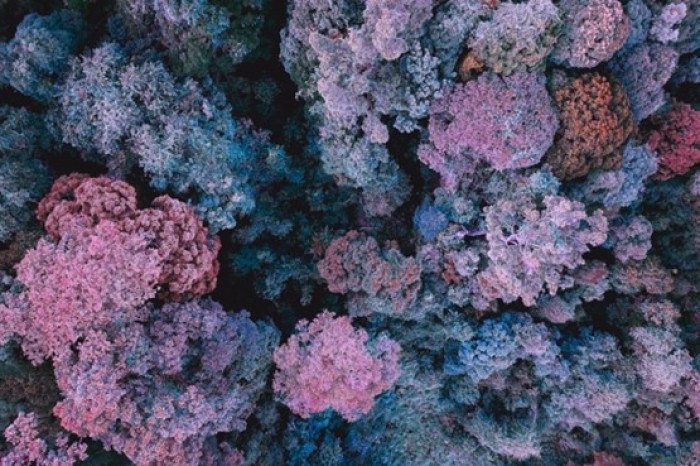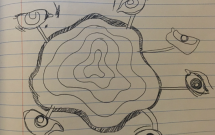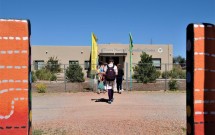
adrienne maree brown, in Emergent Strategy: Shaping Change, Changing Worlds
“Developing your capacity for adaptation can mean assessing your default reactions to change, and whether those reactions create space for opportunity, possibility, and continuing to move towards your vision… I believe that regardless of what happens, there is an opportunity to move with intention—towards growth, relationship, regeneration.”
Regeneration as a concept appears in the literatures of systems thinking, creativity, sustainability, resilience, culture, and archaeomythology to signal systems that feature circular flows with robust feedback, interconnectivity, and continued dynamic generativity and life. Regenerative systems all share certain features, since “The same principle of self-renewal can apply equally to all of the systems that support life” (Lyle, 1996, p. 10).
In the great rides and rills of the unfurling cosmos, across the beautiful plains and cranes of deep time and space-becoming-place, we continue to emerge and deepen – in relationship. We come to find ourselves in the magnificent and heartfelt presence of magnifying others. We come to know ourselves better in the mirror-twinned insights of empathy and wholeness. The big bang is our heart, flaring forth in warmth and caring. We aren’t just inside the continuously evolving universe; we are the continuously evolving universe. We come to humbly acknowledge the magnificence and miraculousness of the unfolding cosmos. Including in and as ourselves.
When I say unfolding, I do mean unfurling. Unfolding sounds like origami, as if though the universe were quadrants and grids in rectangular alignments, carefully pinched and folded. That would be the Cartesian fantasy of linear ordering intruding. Rather, I do mean unfurling because the universe is much more ineluctably fluid, rounded and curved. The spirals and hearth-warming radiance of rhythms and pulses of unfurling wave crests across the briny froth of stars, ocean, molecules, quanta also compose us. We compose our words and whorls and worlds out of this frothy flaring forth and these pulsing micro/macro, inner/outer tides.
The great Western fear of death results from an incomplete sense of the cyclical nature of these larger tides. Western culture is broken asunder and separated by the consciousness-effects of intrusion, colonization, and domination. These hinder fuller understandings. A more dimensioned perception helps us re-cohere. Systems-informed designs can close the loop on life and death to return to us that third phase of experiencing, across scales: Regeneration.
Marija Gimbutas emphasized in her mytho-archaeological insight the great pulses and flows of life, death, and regeneration as the study of consciousness of older European ancestors. Nurturing and co-creating the inherent regenerative pulsing of nature’s flows is the focus of contemporary Indigenous TEK (traditional ecological knowledges). The great culture carriers of our co-implicated becoming, tending, and earthly befriending are centered on regeneration.
What might this mean for us, to regenerate our sense of connectedness and relationship? We can see outpictured, at many scales, the effects of the paradigm of the fear of ending and the illusion of separation. This contracted and partial understanding leads to linear thinking and industrial processes that generate garbage, toxic waste, extraction mining, environmental injustice and climate crises, and wasted lives. These linear models track linearized inputs and outputs rather than cycles, flows, pulses, and loops. What happens when we reconnect these systems loops? We foster regeneration.
At the scale of the relational, we refocus on interbeing, co-creating, and deep relationality. We explore the deeper harmonies of mutuality’s meaning. As we are co-becoming, our scope of care expands to its truer range. We are released from the corseting of attention of hyperreality and modernity. What was attenuated becomes reinfused with attentional presence. The sidelining of empathy as what can restore people to industrial function moves from marginalization to recentering as caring’s promise. Yes, resilience can help folks survive trauma. And resilience is more than that. The bounce-back of resilience’s truer possibility takes a role in the dancing flux and flow of coherent living systems and life-giving communities. Closing loops and restoring feedback systems is part of ‘the pattern that connects.’ As we re-loop relational integrity across fractal scales, our capacities come to greater fruition. We move from helping people survive, to supporting them re-accessing deeper rhythms and source: to thrive.
Reconnecting also regenerates at other scales. Examples include people re-integrating into communities as well as communities synergizing in relational grace with deeply restoring ecosystems. Partnership and power-with create connection. Paired social-ecological systems innovate solutions that welcome back Indigenous nations as caretaking co-tenders. Regeneration is not just some great returning; rather, we thrive in a dynamic dance. Macy calls this “The Great Turning.” The moldering leaves and deep compost of soul and soil give rise to fresh forms. We are in dynamic flow and adapt and transform and grow.
Read about the PhD in Visionary Practice and Regenerative Leadership
 Southwestern College Santa Fe, NM
Southwestern College Santa Fe, NM





